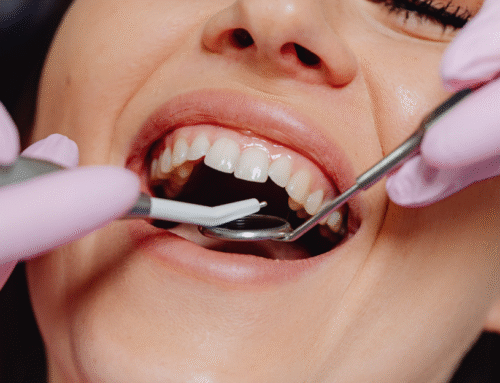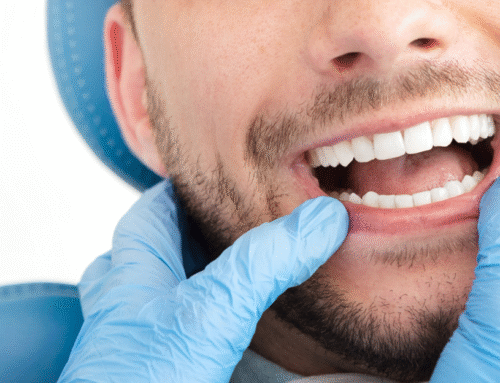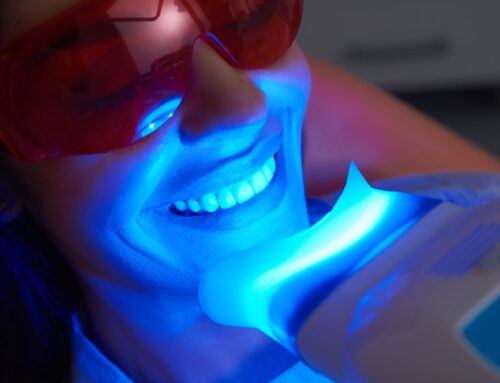As we navigate through 2025, it’s a great time to reflect on our health routines, especially when it comes to taking care of our smiles. In a world filled with quick tips from social media and old family advice, it’s easy to fall for dental care myths that can actually harm our oral health rather than help it. These misconceptions often stem from outdated information or misunderstandings about how our teeth and gums really work. By debunking these dental care myths, we can empower ourselves to make smarter choices for long-term dental wellness.
Whether you’re brushing up on daily habits or wondering about professional treatments, understanding the facts behind common dental myths can prevent unnecessary issues like cavities, gum problems, or even tooth loss. Let’s dive into some of the most persistent dental health myths circulating in 2025 and separate fact from fiction with evidence-based insights.
Busting Dental Care Myths: Sugar Is the Sole Cause of Cavities
One of the most enduring dental care myths is that sugar directly rots your teeth. While it’s true that sugary foods and drinks play a role in tooth decay, the real culprit is the bacteria in your mouth. When you consume sugars, these bacteria feed on them and produce acids that erode tooth enamel over time. This process, known as demineralization, leads to cavities if not addressed.
In 2025, with more awareness around microbiome health, we know that it’s not just about avoiding sugar; it’s about maintaining balance. Brushing twice a day with fluoride toothpaste, flossing daily, and rinsing with an antimicrobial mouthwash can neutralize these acids. Studies from organizations like the American Dental Association (ADA) show that a diet low in fermentable carbohydrates combined with good hygiene reduces cavity risk by up to 50%. So, enjoy that occasional treat, but follow it up with proper care to debunk this common dental myth.
Busting Dental Care Myths: Whiter Teeth Always Mean Healthier Teeth
Many people believe that the whitest smiles are the healthiest, fueling the popularity of at-home whitening kits and viral trends. However, this is one of those oral care misconceptions that can lead to overzealous treatments. Tooth color naturally varies based on genetics, age, and lifestyle factors like coffee or red wine consumption. Enamel thinning or underlying issues like decay can make teeth appear yellower, but aggressive whitening doesn’t address the root cause.
Professional teeth whitening, when done correctly, is safe and effective, but DIY methods often use harsh abrasives that wear down enamel, increasing sensitivity and decay risk. According to dental research, healthy teeth prioritize strength over shade; fluoride strengthens enamel, while whitening should be a cosmetic add-on. In 2025, focus on preventative measures like regular cleanings to maintain natural brightness without falling for this dental health myth.
Busting Dental Care Myths: Brushing Harder Cleans Better
If you think scrubbing your teeth vigorously will remove more plaque, you’re not alone, but this is a dangerous debunking of dental myths moment. Hard brushing can actually damage enamel and irritate gums, leading to recession and sensitivity. Modern toothbrushes, especially electric ones with pressure sensors, are designed for gentle, thorough cleaning.
The key is technique: Use a soft-bristled brush at a 45-degree angle to your gums, making small circular motions for two minutes twice daily. ADA guidelines emphasize that consistent, gentle brushing combined with flossing removes 99% of plaque without harm. In 2025, with smart dental tools on the rise, remember that quality over force debunks this common dental myth and protects your oral health long-term.
Busting Dental Care Myths: Flossing Isn’t Really Necessary
Flossing often gets dismissed as optional in daily routines, but skipping it is one of the biggest dental facts vs myths pitfalls. Brushing alone misses up to 40% of tooth surfaces, where food particles and bacteria hide between teeth, leading to gum disease and cavities. This myth persists because flossing discomfort can deter people, but proper technique makes it painless.
Water flossers or interdental brushes are great alternatives for those who struggle with traditional floss. Research from the Journal of Clinical Periodontology shows that regular flossing reduces gingivitis risk by 30-50%. As we bust dental care myths in 2025, incorporate flossing into your routine, and your gums will thank you by staying healthy and firm.
Busting Dental Care Myths: You Only Need to See a Dentist If Something Hurts
This reactive approach is a widespread oral care misconception that can turn minor issues into major problems. Many dental conditions, like early gum disease or small cavities, are asymptomatic until advanced. Regular check-ups every six months allow for early detection through exams and X-rays, preventing costly treatments.
In 2025, with advancements in diagnostic tech like digital imaging, preventative visits are more efficient than ever. The ADA reports that routine care can cut emergency visits by 70%. Debunk this dental health myth by scheduling proactive appointments to keep your smile in top shape.
Busting Dental Care Myths: Dental X-Rays Are Dangerous Due to Radiation
Fear of radiation keeps some from getting necessary X-rays, but this myth overlooks modern safety measures. Today’s digital X-rays use 80-90% less radiation than traditional film, equivalent to a day’s background exposure from the sun. Lead aprons and targeted beams further minimize risks.
X-rays are crucial for spotting hidden issues like impacted teeth or bone loss. According to the ADA, the benefits far outweigh the minimal risks, especially with infrequent use. In 2025, embrace this tool as part of safe, comprehensive care to bust this common dental myth.
Busting Dental Care Myths: Baby Teeth Don’t Need Much Care Since They Fall Out
Parents often underestimate the importance of primary teeth, but neglecting them sets up lifelong issues. Baby teeth guide permanent ones into place, aid speech development, and support proper chewing. Cavities in them can spread to adult teeth or cause alignment problems.
Start brushing as soon as the first tooth appears, using a rice-grain amount of fluoride toothpaste. Pediatric dental guidelines recommend first visits by age one. Debunking this myth ensures kids develop healthy habits early, reducing future orthodontic needs in 2025 and beyond.
Busting Dental Care Myths: Gum Disease Is Just a Minor Issue
Viewing bleeding gums as normal ignores the seriousness of periodontal disease, which affects nearly half of adults. Untreated, it leads to tooth loss and links to systemic conditions like heart disease and diabetes. This myth downplays prevention through hygiene and professional cleanings.
Scaling and root planing can reverse early stages, while laser therapies offer minimally invasive options in 2025. Harvard Health studies connect poor gum health to inflammation body-wide. Prioritize this aspect to debunk dental care myths and safeguard overall wellness.
Busting Dental Care Myths: Teeth Whitening Damages Enamel Permanently
With the boom in whitening products, many worry about enamel erosion, but professional methods are safe when supervised. Over-the-counter kits with high peroxide can weaken enamel if overused, but dentist-guided treatments use buffered formulas and protective gels.
Whitening works by breaking down stains without altering tooth structure. The International Journal of Dentistry confirms that controlled whitening maintains enamel integrity. In 2025, opt for expert advice to enjoy a brighter smile without falling for this oral care misconception.
Busting Dental Care Myths: Tooth Loss Is Inevitable with Age
Aging doesn’t mean losing teeth; poor habits do. With proper care, most people can keep their natural teeth for life. This myth discourages seniors from maintaining routines, but advancements like implants make restoration viable.
Nutrition, quitting smoking, and managing conditions like diabetes preserve teeth. CDC data shows that consistent care reduces tooth loss by 80% in older adults. Bust this dental health myth by staying vigilant in 2025 for a confident, functional smile.
Busting Dental Care Myths: Pregnant Women Should Avoid Dental Treatments
Hormonal changes increase gum sensitivity during pregnancy, making care essential—not avoidable. This misconception risks “pregnancy gingivitis,” which can affect the baby’s health. Routine cleanings and emergency fixes are safe, especially in the second trimester.
The ADA advises consulting your obstetrician for tailored plans. In 2025, with integrated health approaches, prioritize dental visits to debunk this myth and support maternal and fetal well-being.
Busting Dental Care Myths: Mouthwash Replaces Brushing and Flossing
Mouthwash freshens breath and reduces bacteria; it’s a supplement, not a substitute. This myth overlooks that it can’t dislodge food particles or plaque like mechanical cleaning does.
Choose alcohol-free, fluoride-infused options for added protection. Combined with brushing and flossing, it enhances routines per ADA recommendations. In 2025, use it wisely to complement, not replace, core habits.
As we’ve explored these dental care myths, it’s clear that knowledge is key to a healthy mouth and smile. By embracing facts over fiction, you can prevent problems and enjoy better oral health in 2025 and beyond.
At Maple Hill Family Dentistry, we’re committed to providing top-quality, comprehensive dental care tailored to your needs. Our experienced team, led by Dr. Ji Yun Han and Dr. Josie Park, brings expertise in cosmetic and restorative dentistry, root canal therapies, oral surgery, Invisalign, pediatric dentistry, emergency care, and more. Whether you need preventative check-ups, teeth whitening, or implants, we’re here to prioritize your comfort and well-being. Contact us today to schedule your appointment and brighten your smile, addressing any concerns you may have.
FAQs
What are some common dental care myths I should watch out for in 2025?
Common dental care myths include beliefs like sugar alone causes cavities, brushing harder cleans better, and dental X-rays are too risky. Always verify with reliable sources like the ADA for accurate info.
How can debunking dental myths improve my oral health?
Debunking dental myths encourages better habits, like regular flossing and visits, reducing risks of cavities, gum disease, and other issues for a healthier smile.
Is teeth whitening safe despite dental health myths?
Yes, professional teeth whitening is safe and doesn’t damage enamel when done under supervision, countering myths about permanent harm.
Do I really need to floss daily, or is that a myth?
Flossing is essential and not a myth—it removes plaque between teeth that brushing misses, preventing gum disease as per dental guidelines.
Why is preventative dentistry important in busting dental care myths?
Preventive dentistry debunks the myth of only visiting when in pain by catching issues early, saving time and money while maintaining long-term health.
Can pregnancy affect dental care, and are there myths around it?
Yes, hormones can cause gum issues, but the myth that treatments are unsafe is false—routine care is recommended for both mother and baby.





